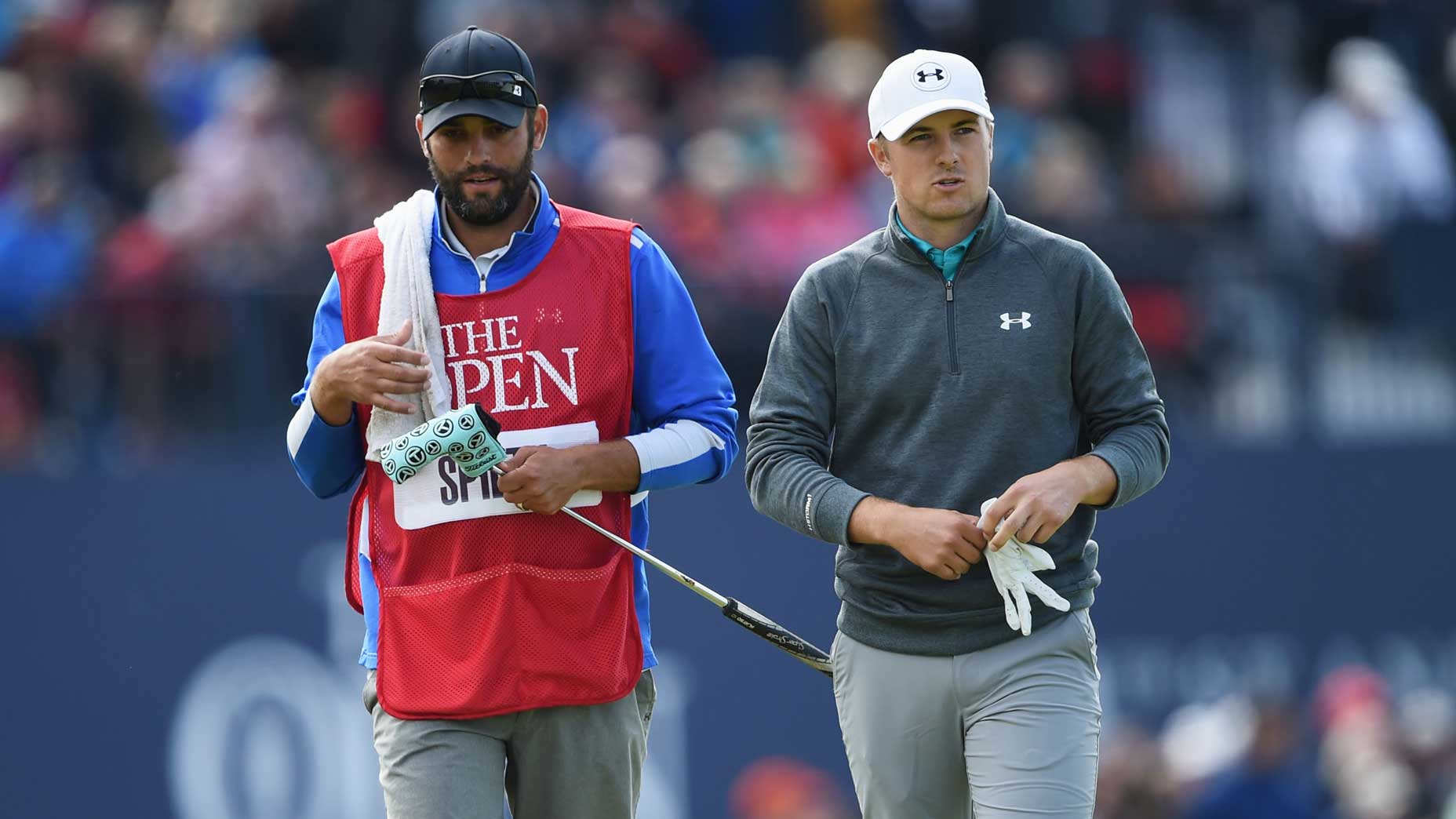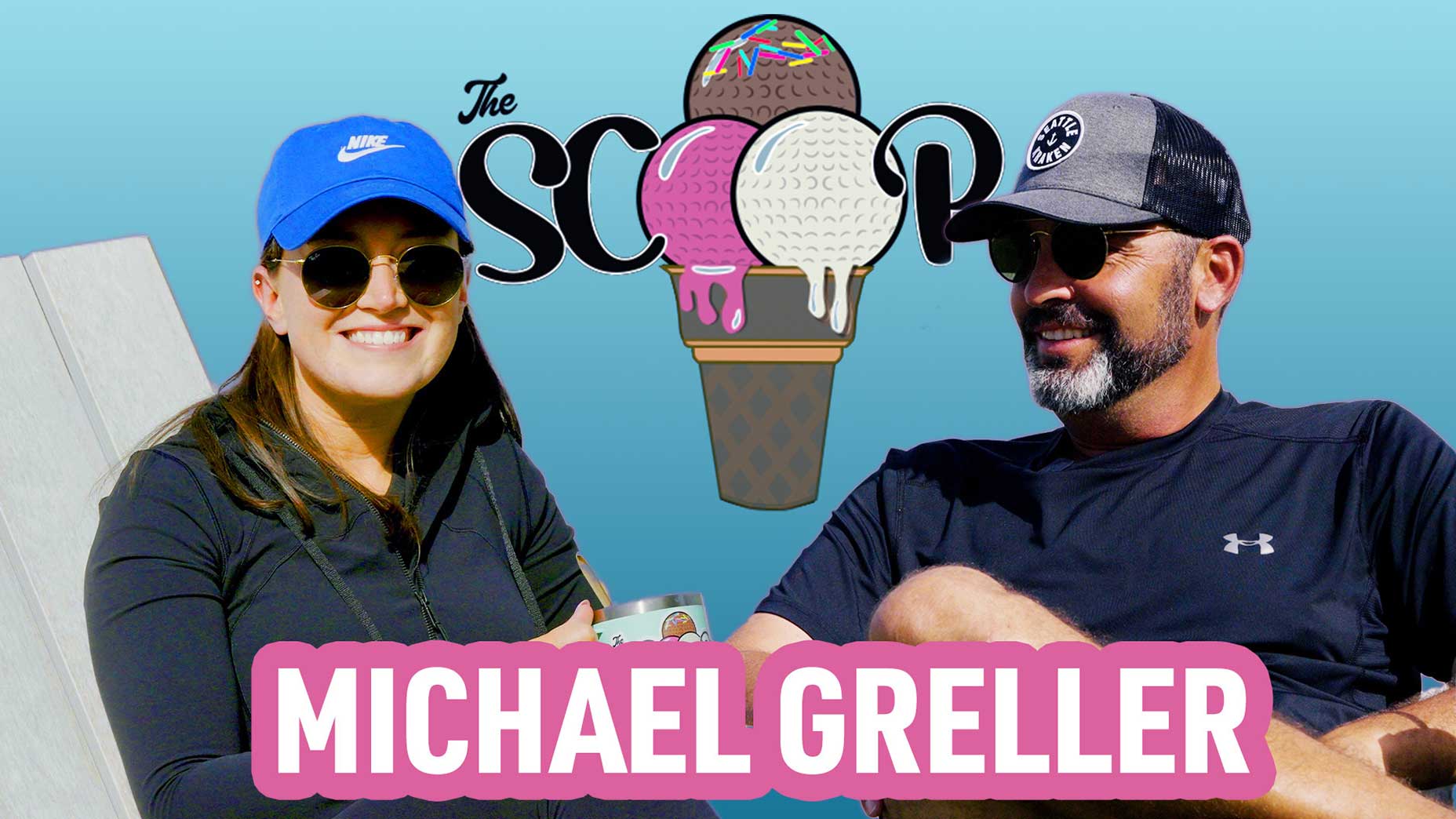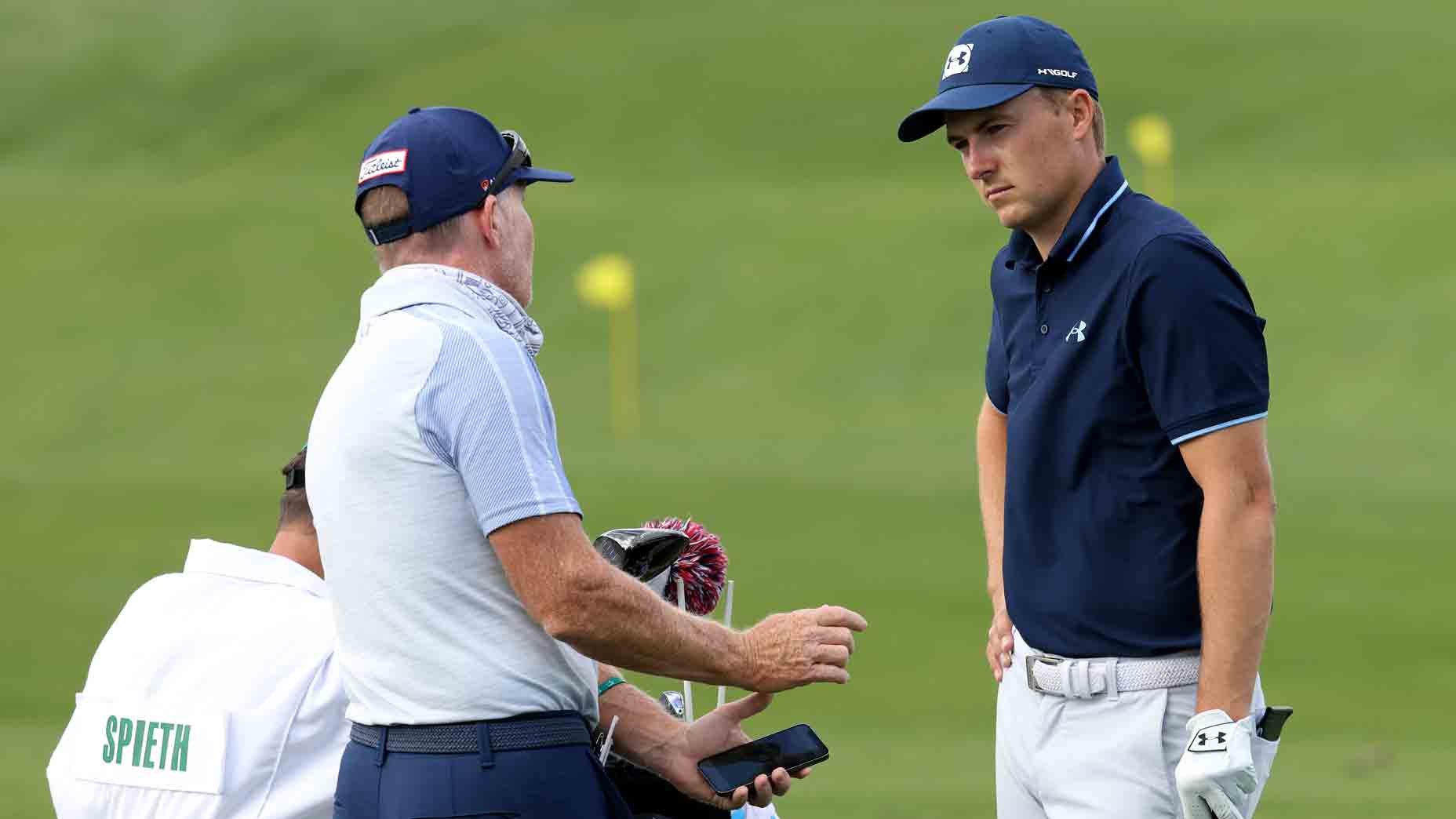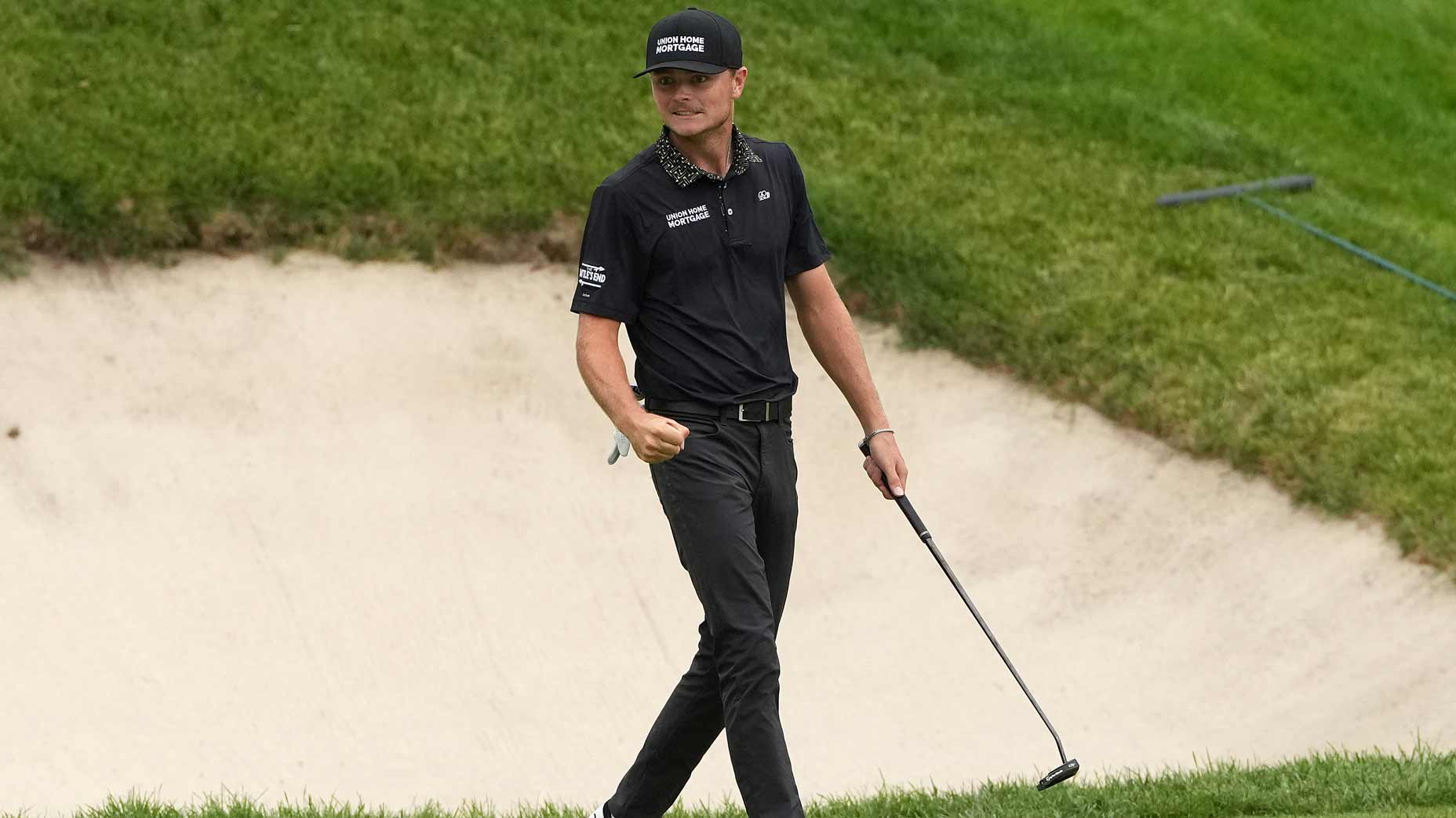Why are so many good golfers playing the John Deere Classic?
- Share on Facebook
- Share on Twitter
- Share by Email
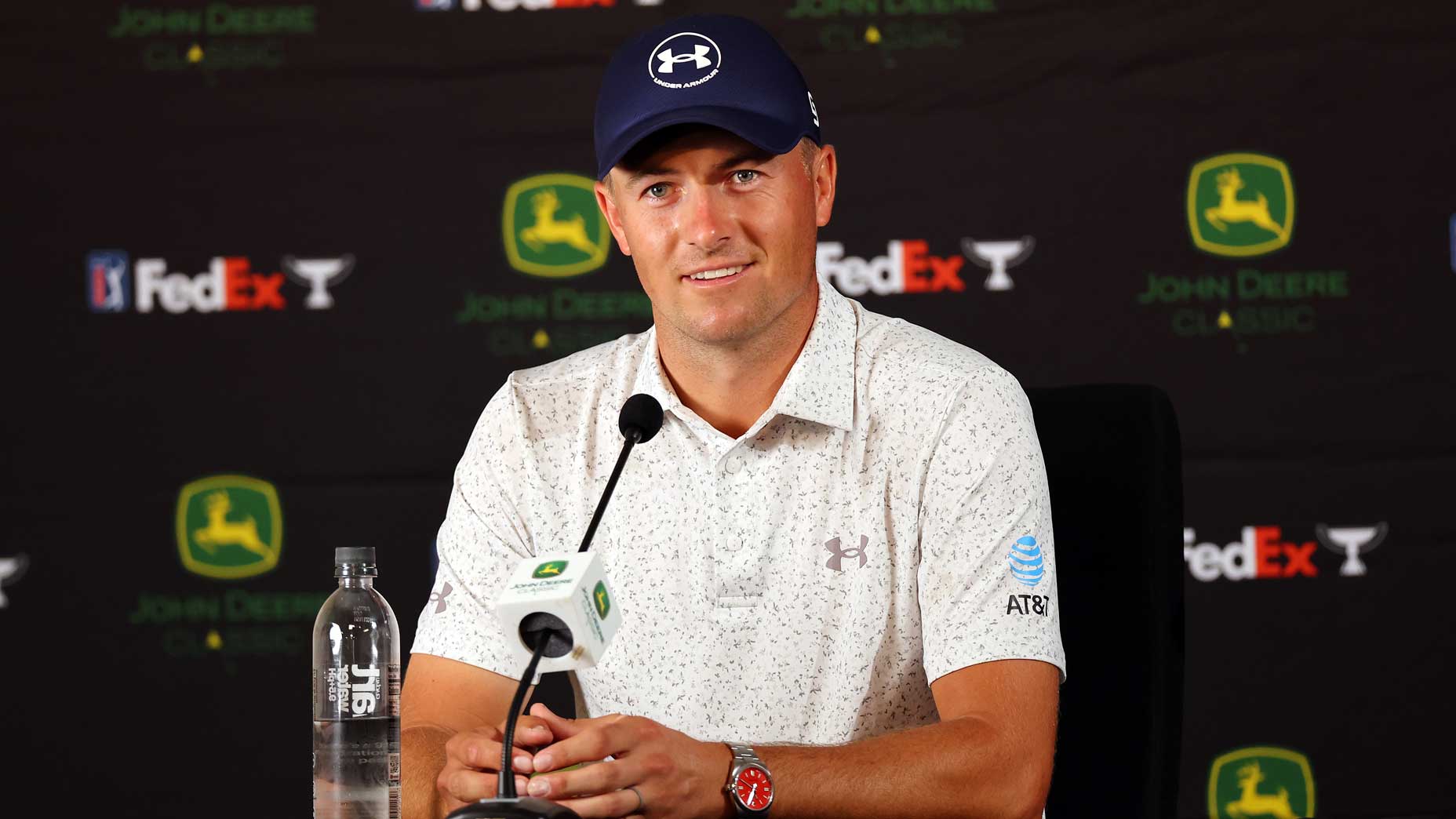
Jordan Spieth is back at the John Deere Classic.
Getty Images
Jordan Spieth has fond memories from time spent in Silvis, Ill.
After all, his first PGA Tour win came at the John Deere Classic in 2013, when he holed a bunker shot to force a playoff and, when he won that playoff, become the PGA Tour’s first teenage champ since 1931. He ran it back two years later, too, winning the 2015 edition in another playoff.
But he hasn’t been back since.
Until this year, that is.
On paper this is a tough spot on the calendar for the John Deere Classic. We’re still just a week removed from a Memorial-U.S. Open-Travelers Championship Signature Event sandwich. The Genesis Scottish Open is next week, serving as a UK tuneup for the Open Championship the week after that. Top golfers don’t like to play every event, which means last week’s Rocket Mortgage Classic and this week’s John Deere Classic became obvious skips.
So why, then, are top players showing up in the Quad Cities? The answer is an intriguing look into the effects of the PGA Tour’s new schedule and the incentives and rewards that come with it.
Spieth is this year’s headliner, but he’s hardly the only talented player. Patrick Cantlay was the highest-ranked Deere competitor until he withdrew with an injury earlier this week; even without him the field still includes World No. 24 Sepp Straka, World No. 28 Jason Day, World No. 29 Sungjae Im, World No. 34 Denny McCarthy and other pros in form like Maverick McNealy, Aaron Rai, and Mark Hubbard.
I get it: that list isn’t exactly knocking your socks off with star power. And it’s worth adding the usual caveat that the PGA Tour is still missing star power in the form of LIV defectors. But still, even with a couple late WDs there are 15 players from last year’s FedEx Cup top 50 in this Deere field. A year ago there were just 10 of those players. There’s also an uptick in pros from the top 125 from last year to this year.
And when you compare this year’s field to 2022 the contrast is even more stark: there wasn’t a single top-50 player in the world in that field. (World No. 58 Webb Simpson was the 10-1 betting favorite followed by No. 80 Adam Hadwin.) This year there are seven.
That’s counterintuitive and interesting.
The conventional wisdom around the Signature Event structure — in which the top 50 players from the 2023 season would be exempt, plus additional in-form players from the 2024 season, to eight limited-field, big-money events — was that the bigger events would get stronger while the lesser events would get weaker. That has been true with the eight Signature Events, which have averaged 48 of the top 49 eligible players showing up (the 50th, Tyrrell Hatton, was removed after the Sentry, when he joined LIV). But the inverse effect has not shown up in the rest of the PGA Tour’s schedule; the “full-field events” have actually gotten stronger, too. Measured by participation of top-50 and top-125 players from last year’s FedEx Cup standings, this year’s full-field events are 29 percent stronger vs. the same events in 2023.
John Deere Classic betting guide: 4 picks our expert loves this weekBy: Brady Kannon
Back to the original question, then: Why?
That’s not a knock on the Deere, which boasts the second-longest title sponsorship on Tour, raised more than $14 million for charity last year and has some of the most fun tee markers in golf. Tuesday night marked the “Big Dig,” where Spieth said his caddie Michael Greller’s kids were “out driving tractors around.” He said he’d had the event on his radar since the spring, and there’s plenty of appealing stuff about this Quad Cities.
But tee markers and tractors aside, three factors seem most likely.
No. 1 is the offseason, which was made more official with last year’s fall swing getting separated from the rest of the season, which allowed players to rest up rather than adding events here and there to keep up their FedEx Cup rank. The FedEx Cup season used to go from one September to the following August; now it’s just January through August. That makes a big difference and players are willing to play a more packed schedule during that condensed time period.
No. 2 is the urgency of the top-50 list at the end of the year. Those who aren’t in that top-50 exemption category desperately want to get there and those who have it this year desperately want to keep it. Take a few of this year’s top-50 exemptees participating this week: Denny McCarthy is No. 43 in the current FedEx Cup ranking and Patrick Rodgers is No. 49 and Eric Cole is No. 55 and Jordan Spieth is No. 59 and Seamus Power is No. 64 and Adam Schenk is No. 67 and Andrew Putnam is No. 72; all of the above are signed up this week. Sure, there’s a strong incentive to play the Signature Events, where the money is bigger and the points are bigger. But if players don’t perform well in those, there’s incentive to play these full-field events, too, because they can keep accruing additional points in an effort to get into those bigger events for next year.
No. 3 is the urgency of the rest of the top 125 to squeeze their way into the top 70, the new cutoff for the FedEx Cup Playoffs. It used to be that, once you were outside the Tour Championship’s top 30, there wasn’t a ton of difference between No. 31 and No. 125; everybody kept his card and could play most events the following season. That’s not the case any longer. Many of those players in the 51-70 and 71-125 categories haven’t been eligible for Signature Events this season; combine that with a shortened season and their playing schedules are all but predetermined. Gone are the days of every PGA Tour player picking his schedule at free will. If you’re not in the top 50 you’re playing every chance you can get.
There are still details to sort through. Is this the incentive structure the Tour wants? Are lower-ranked pros, Korn Ferry Tour graduates and top college players getting enough playing opportunities? Should Signature Event fields get expanded? Should there be further differentiation between a full-field event and a Signature Event? But if it sounds like things are getting more cutthroat, well, that’s probably the point.
In sum, what this means is that someone like Scottie Scheffler (No. 1 in the FedEx Cup) or Xander Schauffele (No. 2) can pick his own schedule. Play well enough to guarantee a berth in next year’s top 50? Feel free to pick and choose your events. That’s a perk to go along with the $20 mil purses: weeks off.
But for most other pros it’s pedal to the medal time. Including this week there are just three “full-field” events left, the 3M Open and the Wyndham Championship being the others. The Genesis Scottish Open has limited access, as does the Open Championship. The ISCO and Barracuda Championships are opposite-field events with reduced points.
At the beginning of the year the Tour projected roughly 18 players from outside the top 50 would move inside that juicy cutline from year to year. They projected roughly 31 new players moving into the top 125. So far, despite some additional starts from top pros, those numbers check out. You can play more, but if you don’t play better it doesn’t much matter. So there’s some urgency in the air this week in Silvis, Illinois.
Welcome to the John Deere.
Latest In News

Dylan Dethier
Golf.com Editor
Dylan Dethier is a senior writer for GOLF Magazine/GOLF.com. The Williamstown, Mass. native joined GOLF in 2017 after two years scuffling on the mini-tours. Dethier is a graduate of Williams College, where he majored in English, and he’s the author of 18 in America, which details the year he spent as an 18-year-old living from his car and playing a round of golf in every state.


